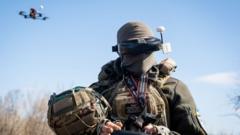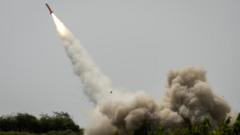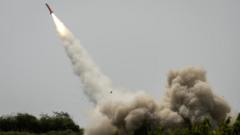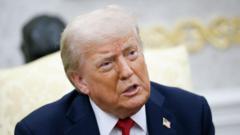A growing number of Ukrainian soldiers injured by drone shrapnel are being saved by a revolutionary magnetic extractor, developed from frontline medical needs. This method minimizes invasiveness and enhances recovery chances for gravely wounded servicemen.**
Innovative Magnetic Extractors Revolutionize Medical Treatment for Shrapnel Wounds in Ukraine**
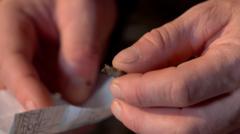
Innovative Magnetic Extractors Revolutionize Medical Treatment for Shrapnel Wounds in Ukraine**
New medical technology utilizing magnets is changing the game for treating complex injuries on the Ukrainian battlefront, significantly increasing survival rates.**
Ukrainian serviceman Serhiy Melnyk recounts the harrowing experience of having shrapnel lodged in his heart after a drone attack. The 80% increase in shrapnel wounds on the battlefield has made advanced medical technology critical for survival. However, it was not merely luck that saved Serhiy's life, but rather an innovative magnetic extractor designed for rapid, minimally invasive removal of foreign bodies from wounds.
The emergence of drone warfare has led to complex injuries that traditional medical approaches struggle to address. "I thought I was just short of breath under my body armour," Serhiy recalls. But thanks to the timely intervention of a cardiovascular surgeon, Dr. Serhiy Maksymenko, the deadly shard was extracted with a simple incision and a magnetic tool, revealing a new paradigm in emergency medicine.
In just one year, Dr. Maksymenko and his team have executed over 70 successful operations using the magnetic extractor, a device inspired by the urgent necessity for effective treatment solutions voiced by frontline medics. Volunteer Oleh Bykov, who transitioned from a legal career to military support work, contributed to modernizing this concept, evolving tools originally used since the 1850s in combat medicine.
Most notably, the magnetic extractors are portable and adaptable for various types of wounds, easing the extraction of shrapnel without extensive surgery. Feedback from war medics emphasizes its significance; as David Nott, a seasoned war zone doctor, highlights, finding shrapnel manually is akin to "looking for a needle in a haystack." By facilitating rapid removal, the devices drastically reduce the risks associated with larger incisions and resulting blood loss.
Though the magnetic extractors lack formal certification from the Ukrainian Health Ministry, their deployment in emergency scenarios under martial law demonstrates their life-saving potential. As Oleh put it, “If someone thinks my actions are a crime, I'll take responsibility,” underscoring the urgent need for effective medical interventions during wartime.
As the war continues, the distribution of these devices has expanded, with 3,000 units reaching hospitals and front-line medics. Practitioners like Andriy Alban highlight their importance, often performing under dire conditions with limited resources.
For families of the injured, the impact of this technology is palpable. Serhiy's wife, Yulia, expresses her heartfelt gratitude for the individuals behind these innovations, thanking them for her husband's life. As war evolves, so too does the necessity for adaptive medical solutions, proving that in the quest to save lives, innovation can stem from the unlikeliest of circumstances.


